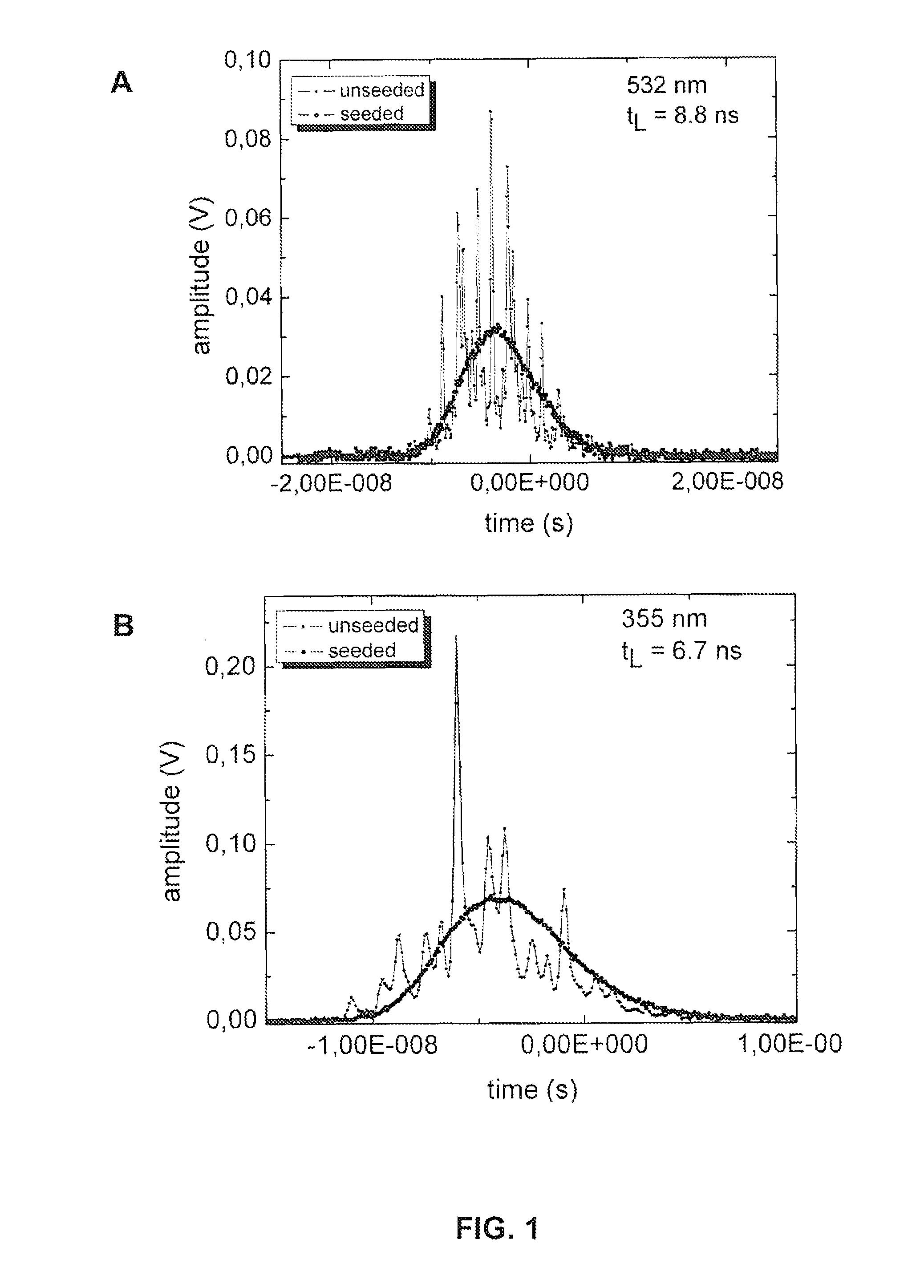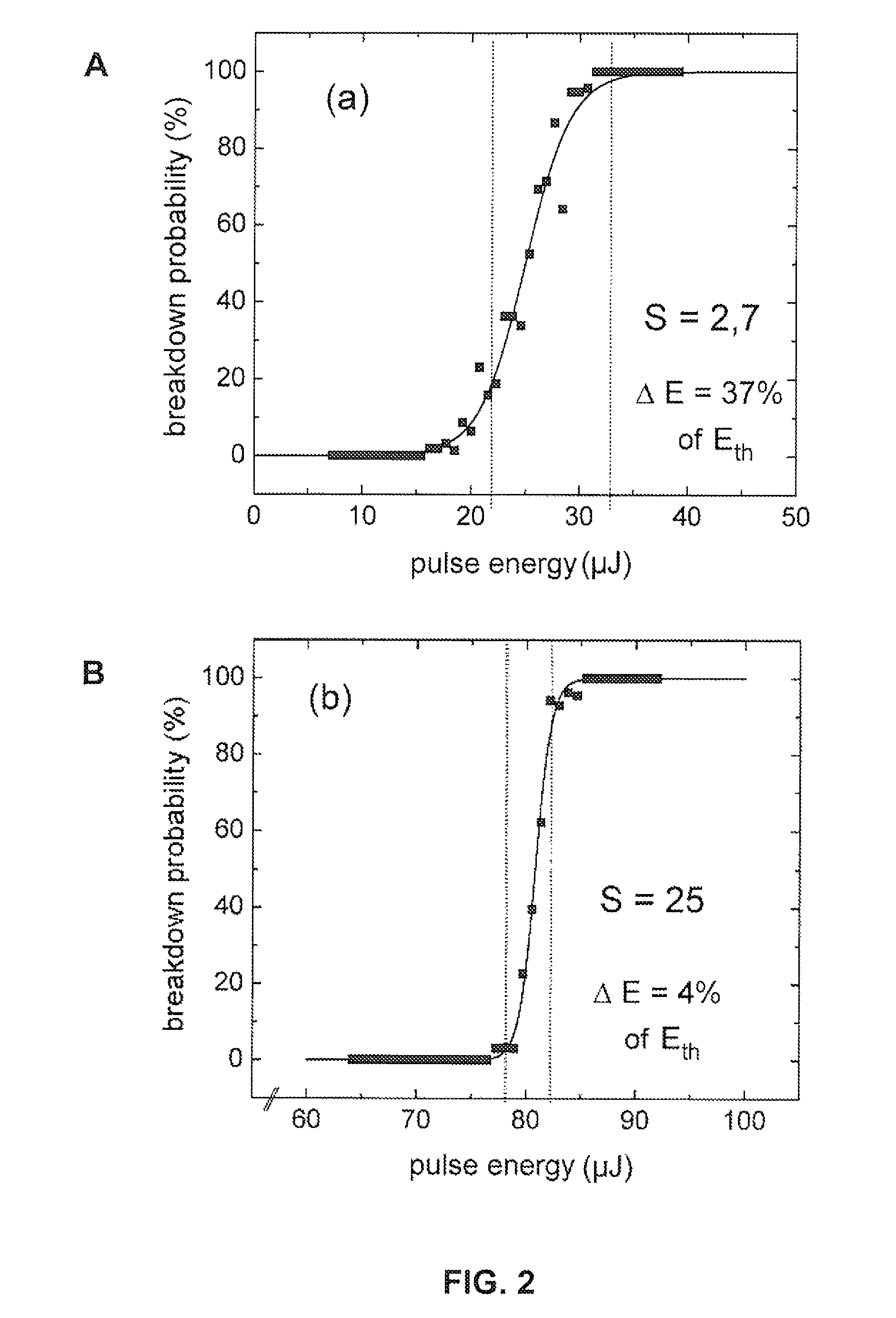Method for laser machining transparent materials
a laser machining and transparent material technology, applied in laser beam welding apparatus, laser surgery, eye surgery, etc., can solve the problems of complex laser systems with pulse durations less than 100 ps, correspondingly high acquisition costs, and relatively low price of microchip lasers, so as to shorten the wavelength used and prolong the laser pulse duration
- Summary
- Abstract
- Description
- Claims
- Application Information
AI Technical Summary
Benefits of technology
Problems solved by technology
Method used
Image
Examples
Embodiment Construction
[0029]Laser pulses originating from “normal” ns laser oscillators have distinctive intensity peaks due to the superposition of many longitudinal modes (“longitudinal mode beating”) whose structure and amplitude change from pulse to pulse. In principle this fact has been known for a long time but the extent of the intensity overshoots relative to the pulse shape averaged over time or over many pulses does not reveal itself until after measurements with photo detectors and oscilloscopes with a high temporal resolution.
[0030]The measurement curves in FIG. 1 were recorded using a photo detector with a rise time <100 ps and an oscilloscope with 3 GHz bandwidth. From the measurement curves it is evident that the supposedly “statistic character” of the optical breakdown with nanosecond pulses is largely due to statistical variations of the laser pulses that have been used. With pulses that are temporally “smooth”, for example Gaussian, a behaviour can be achieved that is considerably bette...
PUM
| Property | Measurement | Unit |
|---|---|---|
| sizes | aaaaa | aaaaa |
| threshold sharpness | aaaaa | aaaaa |
| threshold sharpness | aaaaa | aaaaa |
Abstract
Description
Claims
Application Information
 Login to View More
Login to View More - R&D
- Intellectual Property
- Life Sciences
- Materials
- Tech Scout
- Unparalleled Data Quality
- Higher Quality Content
- 60% Fewer Hallucinations
Browse by: Latest US Patents, China's latest patents, Technical Efficacy Thesaurus, Application Domain, Technology Topic, Popular Technical Reports.
© 2025 PatSnap. All rights reserved.Legal|Privacy policy|Modern Slavery Act Transparency Statement|Sitemap|About US| Contact US: help@patsnap.com



